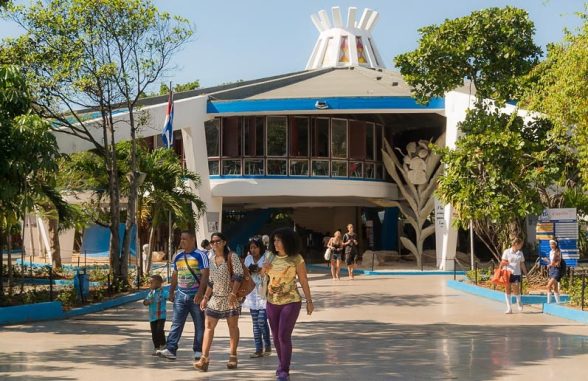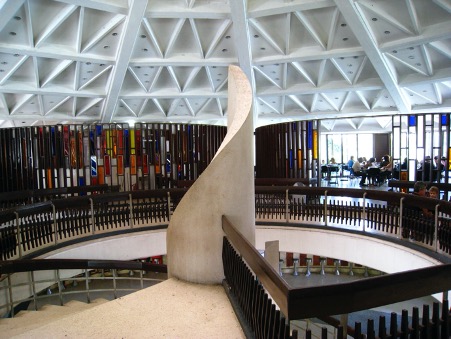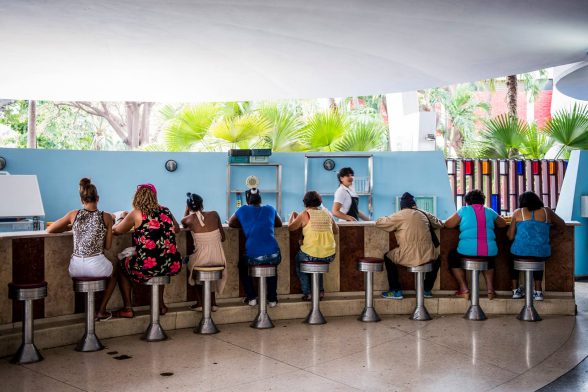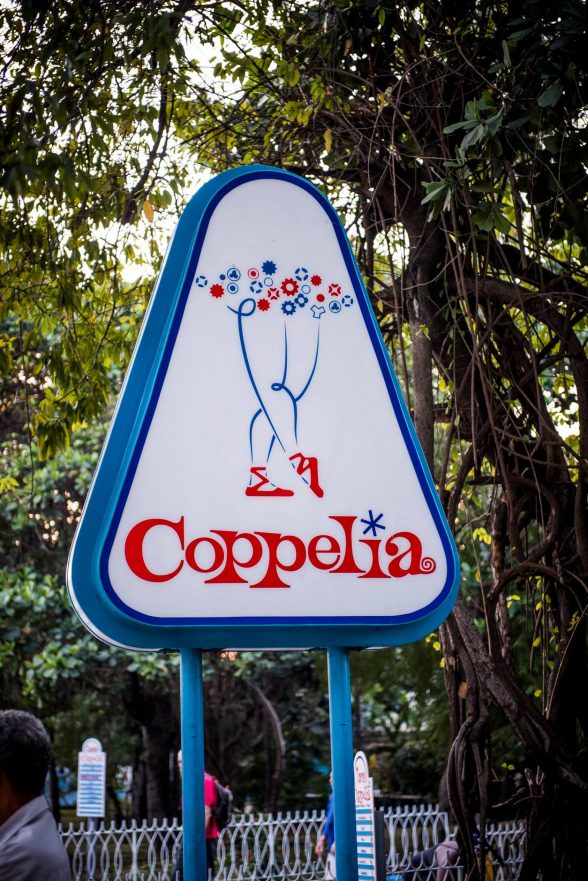This website uses cookies
This website uses cookies to enable it to function properly and to analyse how the website is used. Please click 'Close' to accept and continue using the website.


August 2022 - Coppelia Ice Cream Parlour, Havana

Image: Creative Commons / Susanne Hultman.
Coppelia Ice Cream Parlour, Havana, Cuba (1966)
Architects: Mario Girona with Rita María Grau and Candelario Ajuria
Engineers: Maximiliano Isoba and Gonzalo Paz
One of the best-known images of Fidel Castro’s 1959 visit to New York shows him eating ice cream at the Bronx Zoo. This was more than a simple anecdote. Ice cream was part of a revolutionary social re-composition. Immediately after the revolution, Castro ordered his ambassador to Canada to ship him twenty-eight containers of ice cream from Howard Johnson’s, a U.S. based ice cream producer. Upon tasting, Castro decided that Cuba needed to respond on a revolutionary scale by creating something bigger and better, yet priced low enough for everyone to enjoy.

Image: BitBoy (CC BY 2.0).
To this day, both Cubans and visitors can, for significantly different prices, enjoy subsidized ice cream at Coppelia in La Habana’s Vedado neighborhood. It was named after Léo Delibes’ ballet, one of the signature pieces of the Ballet Nacional de Cuba directed by Alicia Alonso (and the favorite ballet of Celia Sánchez, Coppelia’s promoter). The circular structure opened to the public on June 4, 1966, and its long queues rapidly became famous. Coppelia serves twenty- six flavors—presumably an homage to the failed rebel attack on the Moncada army barracks on July 26, 1953, an event that inspired the Cuban Revolution. Occupying an entire block situated between Calles K and L and Calles 21 and 23, its grandiose structure – along with the lush vegetation and tables that surround it – can host almost 1,000 people. Reminding one of a spider stretching its legs and influenced by the concrete structures of Pier Luigi Nervi, the building rapidly became a symbol of the Revolution’s social programme.
If the mammoth structure could be seen as a macho gesture, the legislations prosecuting the queer community at the time could be seen as a prolongation, both physically and metaphorically, of Coppelia itself, epitomising a new regime that condemned queering practices. In 1965 the Unidades Militares de Ayude a la Produccion camps were introduced in the country. These detention camps particularly targeted gay men, along with other groups seen as deviants of the revolutionary corpus (from Jehovah’s Witnesses to political objectors). – bourgeois degenerates. Yet Coppelia saw an increasing queering process. In a time of state-sanctioned persectution of gays, Coppelia became a cruising spot where flavours were symbols of sexual orientation.

Image: Havana Cultura
In a well-known scene from the film Fresa y Chocolate (1993), the two protagonists meet at Coppelia. In a time of state-sanctioned persecution of gays, Coppelia became a cruising spot where strawberry and chocolate were symbols of sexual orientation—strawberry being the queerest choice. Nowadays, its role as a space for interaction has been redefined by the emergence of free Wi-Fi zones throughout the city, of which Coppelia is one. Bodies need to be present physically to meet digitally, enacting new forms of interaction and cruising.
Ivan L Munuera is a New York-based scholar, critic and curator working at the intersection of culture, technology, politics and bodily practices in the modern period and on the global stage.
The Building of the Month is edited by Dr. Joshua Mardell

Image: Havana Cultura

Look for past Buildings of the Month by entering the name of an individual building or architect or browsing the drop down list.

Become a C20 member today and help save our modern design heritage.